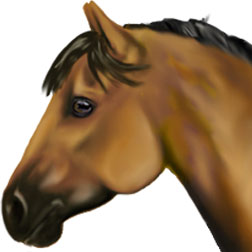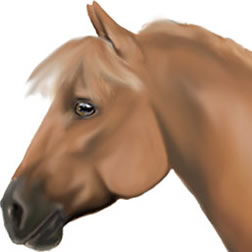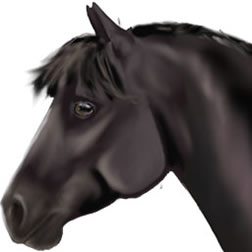|
|
|
|
|
|
|
|
 |
 |
 |
 |
Message thread at CPP
<< Back to previous page
***Clicker Club***| Horsey, That's funny. LOL. Toby is smart, and he knows where those treats are! Be sure to tell us all about your training sessions. We are looking forward to hearing about your clicker training adventures! We'd love to see some pics in the WW, too. | 
EagleGirl & Deerslayer | | 2010-10-03 02:33:26 | | | Oh, Comanche, that is great! That means you did a good job, and that you two work well together! Keep up the good work, and let us know what you are going to work on next. :-) | 
EagleGirl & Deerslayer | | 2010-10-04 00:42:44 | | Eagle? I don't think Comanche is really connecting with me and trusting well......IDK what to do...
Also he is counting a bit! He moves his foot when i count! (yes!)
Also Eagle i am NEVER teaching him "Play Dead" because he might pull my leg on that a bit.....Also that would be bad! He is a trickster!
Thanx for everything so far!,
Comanche1999 | 
Comanche1999 & Dancer | | 2010-10-05 00:09:02 | | Hi Comanche,
One of the really wonderful things about clicker training is the strong bond it builds between you and your pet. But it takes time and patience. One day you will just realize that the bond is there.
Just take it slow, and don't rush. Try targeting different things: a water bottle, a fence post, a traffic cone (those are really fun and you can do a lot with them), a rope looped on the fence . . . Just use your imagination. Try playing The Rope Bump Game with him; you should both enjoy that. Play around with having him follow the rope while you hold it. Do as much work as you can at liberty (with Comanche free to move away if he wants).
Clicker training helps to build that bond because it requires you and your horse to pay attention to each other. You will find as you progress that you are becoming more in more attuned to each other.
If you are working on anything specific, let me know and we can talk about it. | 
EagleGirl & Deerslayer | | 2010-10-05 18:59:53 | | | Eagle When i am riding this horse and when we come to the mounting block he keeps walking. What do i do? | 
ponypals100 & Bella | | 2010-10-05 22:01:44 | | | Eagle, I need some help with my dog, Ty. He will not stop barking, he barks at anything! When my little sister is just walking across the kitchen, he starts to bark at her! We have tried anything and everything from a spray that smells to ignoring him. We also put a back pack on him that holds weights in it, oh and we take him on a walk about 2 times a day. When people come over, he barks at them , and when ever they start to talk, he barks at them! Especially at my brothers friend Kyle, Ty REALLY hates him! | 
Kaitlin2010 & Briggs | | 2010-10-07 22:44:38 | | Hi Pony. If you are wanting to train your horse to come up and stop at the mounting block so you can get off, I still think you would benefit from watching the video I linked to in an earlier post. It will give you a good idea of how to move in tiny steps.
You might want to start with getting him to whoa when he comes to the mounting block. If you can treat from the saddle, that will be very helpful. Is this horse familiar with the clicker? If he isn't, you will need to start at the beginning and teach him how to work with it. If he is, you will need to consider what he is doing so you will know where to start.
If he has a good whoa, you can start by walking him up to the mounting block, saying "whoa" and pulling back gently on the reins. Once he stops forward motion, click, then lean forward and treat him from the saddle. (If he doesn't take treats from the saddle, you might want to work on that first.) An alternative is to have someone else on the ground with the treats. You control the clicker, and they walk up and treat the horse when you click. Gradually increase your wait time (after he whoas) before you click.
If he does not have a good whoa, you will need to work on that first. If you are needing to teach him to stop, then you could do it a couple of different ways. You could ask him to whoa, then continue to ask until he stops forward motion. Click and treat as soon as forward motion is halted. Or, if he is simply not stopping, you could ask him to whoa, then click for any slowing or hesitation. You can gradually increase the wait time before the click, helping him to slow more and more until he finally stops.
Once he has a good whoa, you can try walking him over to the mounting block. Ask him to whoa, and click as soon as he does, then treat. Gradually extend the length of time between his whoa and the click.
Once he is giving you a solid whoa and stand at the mounting block, you can start shifting your weight in the saddle. Click at the first shift, and gradually do more and more until he is standing while you dismount.
You may find you need to put many more steps in here. But if you will think carefully about what you want him to do, then figure out which steps you need to take to get there, you will be able to tailor the training to his specific situation.
Please let us know how it goes! | 
EagleGirl & Deerslayer | | 2010-10-08 04:49:29 | | | Ok my riding teacher showed me what i can do i can turn him and when he is Lined up with the block we walk him and u can stop him there i will try to do that | 
ponypals100 & Bella | | 2010-10-08 18:58:07 | | Clicker Column - October 9, 2010
Last week we talked about how to use The Rope Bump Game to move into training your pony to walk with a rope around his neck. This week we are going to talk about how to put that lead on his halter and lead him.
If your pony is already wearing the halter, you are ready to start working on putting the lead on it. If not, you will need to teach your pony to wear a halter. We briefly went over those steps in an earlier column (September 11, 2010).
** Once he is comfortable with it, and doesn't mind it touching him, you can start touching it to his muzzle, then sliding it very slightly up, clicking, removing it, and treating. You will just proceed tiny step by tiny step. Each situation will be unique, but basically you will work to slide the nosepiece on, get him comfortable with it, moving the poll strap up the right cheek, over the poll, the buckle strap up the left cheek, and the poll strap into the buckle. You will need to take all the time your pony needs, and watch him for clues as to what you need to do next. **
You may find you need to put some extra steps in there. That's okay. Clicker training is customized for each individual animal. Yes, the basics are the same, but every animal is in a different place, so each training session will be unique. You may find that your pony does not want you to reach over or under his head to put the poll strap over his poll, so you will need to take some time to work on getting him used to having your hand and arm move around his head. If you observe your pony carefully, he WILL let you know what he needs.
If you have been using the clicker to work with your pony for a while, you are starting to get the hang of how to observe your pony and decide on the next step. If you misjudge, which happens to us all, you simply back up to the last place you were successful and begin again. Sometimes the misjudgment is stressful enough for your pony that you will want to go back and have a success, then stop and wait until another day or session (later in the same day). Sometimes the misjudgment is mild enough that you can simply back up then keep going.
We have been going into great detail in previous columns, but this week we are going to be more general. This gives you the opportunity to trust yourself and your pony, and make each session truly your own. You have been working with your pony and learning to observe him. He has also been learning to observe you. You may or may not be aware of a bond developing between the two of you. If not, don't despair. Each pony is different and has his own timetable. As you learn to work together, the bond WILL develop. One day you will suddenly realize that it is there.
I remember clearly the day I realized how strong the bond was between me and my mule. I can't recall exactly what happened, perhaps he was nuzzling my cheek, but I do distinctly remember suddenly realizing, "He loves me!' And indeed, it was (and is) true. The bond had formed and I KNEW my mule loved me. I knew I loved him too. There are few feelings like realizing an animal truly puts his trust in you and wants to be with you. This was especially amazing to me because my mule had been abused before he came to me and he had been so terrified of being around anyone. He was no longer afraid around me, and he WANTED to be with me, and it was incredible to realize that this was true.
As you work with your pony you will be building this bond little by little. As you begin to teach your pony to walk on a lead attached to his halter, remember to observe your pony so he can tell you what he needs. Think about your end goal - to have your pony walk nicely on a lead. He may or may not already be doing this when you hold out a rope for him to follow. If not, just keep on working at it one step at a time. If so, then you are ready for this next step.
You will be deciding exactly what steps to take, based on what your pony already knows and how he needs to be approached. The steps might include touching the soft end (the end without the clip) of the lead rope to your pony's muzzle, then working your way to his chin. You might also take the soft end and slip it under the connecting strap (the strap that runs beneath your pony's head, between the throatlatch and the tie ring), then click and treat. Once your pony is used to this, you can leave the soft end of the lead under the connecting strap, and ask your pony to walk with you. Remember to hold out the other end of the lead (loop it and hold the clip in your hand) for him to follow/target. You might also turn the lead around and let him see the clip. If he is apprehensive, be sure to show it to him, then immediately click and treat. At some point you will most likely gently bump the tie ring with the clip, then click and treat. You will probably also want to hold the lead in your hand and grasp the tie ring with your hand, getting your pony used to having pressure on the tie ring before you actually hook the clip to it.
You may have a pony that already knows how to have a lead attached to his halter, but has not been walking nicely. Now that you have done all the preliminary work we have talked about previously, you may be able to skip all the above work and simply clip the lead to his halter and move to the next step. Once you do get the lead hooked on the halter, and your pony is not too nervous about it, you will want to ask him to walk with you by looping the other end of the rope and holding it out for him to target/follow. He is already used to this, and familiar things go a long way toward easing your pony's apprehension. Eventually you will be able to fold the lead and hold it in your left hand, and walk beside your pony with a loose lead. (Remember - NEVER loop a lead around your hand or any part of your body. Always FOLD it so in an emergency you can simply let go if you need to, without getting tangled in the rope and sustaining a serious injury.)
If at any point your pony does not "get" it, or he becomes nervous, you will need to back up to the last point where he was successful. Observe him carefully, and really think about what he needs to do next. Sometimes I just start at the very beginning and ask myself, "What is the very first thing that needs to happen before we can do 'x'?" Other times I find it helpful to work backwards, asking myself, "What needs to happen just before he can do 'x'?" Then I continue questioning each step until I find the point where we need to begin. Sometimes I go back and forth between these two methods. You may find yourself doing the same thing.
One of the things that I found very intimidating at the very beginning was the fact that so many articles told me to "break it down into tiny steps", but I didn't find very much information about exactly what those steps were. How in the world did one go about "breaking things down into tiny steps"? Many of the articles I found were fairly general, and I did not have a good grasp of clicker training concepts, so I was confused. I didn't know where to begin, and I was afraid I might mess up my mule. When I finally figured out that he was already ruined, and nothing I was going to do could make him any worse, I just jumped in. I needed to get that nylon halter off his head, because the buckle was beginning to slip and it posed a danger to him. And I knew I needed to start by helping him to allow me to touch the halter. So that is what I did. And I just moved on from there.
Some days were great, some were terrible. Some days I seemed to do just the right thing, and other days I seemed to be going about it all wrong and moving way too fast. But on the eighth day of clicker training, I was able to remove the halter from his head without terror on his part. I was already learning to observe and analyze and break things down into tiny steps. I just didn't realize I could do it until I started doing it.
You too, can learn to observe your pony and analyze your goals and break them into steps. If you goof, just back up and begin where you last had success. As long as you are gentle and kind, your pony will forgive any mistakes you make. You will work through those mistakes together and the bond you build will be stronger because of it.
Until next time, happy clicking!
EagleGirl | 
EagleGirl & Deerslayer | | 2010-10-10 22:52:47 | | | Welcome Rose! Your clicker sounds very interesting. Can you describe it a bit more? Is it easy to use? We are looking forward to hearing how your training goes! | 
EagleGirl & Deerslayer | | 2010-10-12 19:14:51 | |
|
 |
 |
|
|
 |
 |
 |
 |
 |
 |
 |
 |
 |
 |
 |
 |
 |
 |
 |
 |
 |
 |
 |
 |
 |
 |
 |
 |
 |
 |
 |
 |
| |